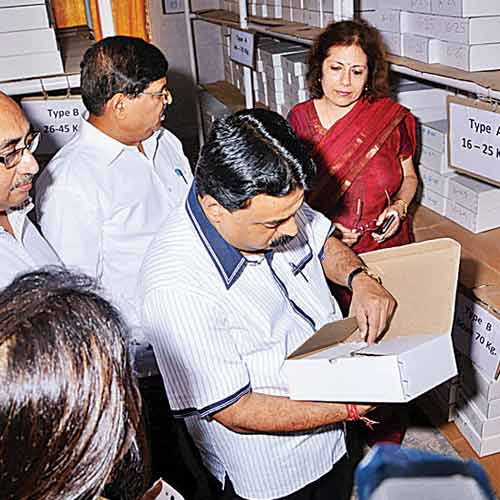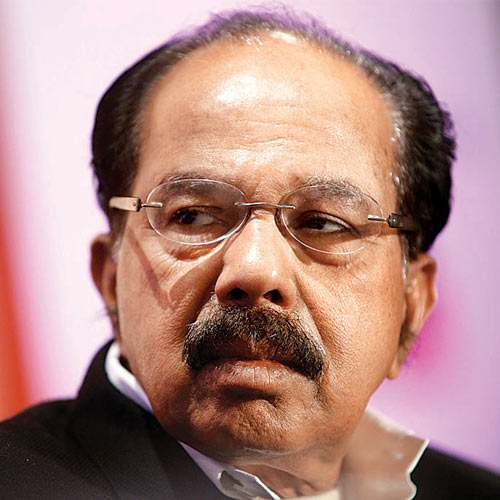No end to the weather woes in Andhra Pradesh, after cyclone Phailin and cyclone Helen, the state now braces for cyclone Lehar which will make landfall on Thursday. Costal Odisha has also been put on high alert.
According to weather officials, Leher is about 700-800 kms from the coast and landfall is expected by Thursday noon. Heavy rains can be expected in the coastal districts from wednesday evening with the cyclonic system inching towards the coast.
The cyclone intensity would gradually increase with rainfall being witnessed at most places and heavy to very heavy rainfall at a few places. Isolated extremely heavy falls would occur over north coastal Andhra Pradesh on November 28.
Squally winds, with speed reaching 45-55 kmph gusting to 65 kmph, would commence along and off Andhra Pradesh and south Odisha coasts from November 27 evening. The very severe cyclonic storm is expected to cause extensive damage to agriculture crops, kutcha houses and disrupt power and communication lines and also disrupt rail and road traffic.
The official bulletin has advised total suspension of fishing operations and fishermen out at sea along and off Andhra Pradesh and south Odisha coasts have been advised to return to coast. It also advised evacuation from coastal areas and judicious regulation of rail and road traffic. People in affected areas have been advised to remain indoors.
The government has already put the Collectors of coastal districts on high alert and announced a number of measures to deal with the situation. The East Godavari district has announced holiday for educational institutions on Wednesday and Thursday and also asked the owners of small shops not to operate.
The Andhra Pradesh government has decided to deploy 30 teams of National Disaster Response Force (NDRF) for rescue and relief operations in the coastal districts. While 15 NDRF teams have already been positioned in Visakhapatnam (4), East Godavari (5), West Godavari (2) and Krishna (4) districts, the state government today requested the Centre to rush in another 15 teams as moderate to very heavy rainfall is expected from tomorrow, according to an official press release.
The Union Defence Secretary has been requested to station four helicopters at Visakhapatnam for emergency operations wherever required. Special officers have been appointed in nine coastal districts to oversee precautionary measures as well as rescue and relief operations.
Coast Guard, Coastal Security wing, Marine Police and Superintendents of Police of the districts concerned were put on alert in view of the cyclone and assist the district administration. Army and railway authorities have also been put on alert in view of Lehar's threat, the release added.
Chief Minister N Kiran Kumar Reddy discussed the situation with Chief Secretary PK Mohanty and wanted the administration to remain on high alert and take all steps to prevent loss of life due to cyclone. Mohanty is in constant touch with the Collectors of coastal districts and monitoring the preparedness.
Meanwhile, an official release informed that newly-formed State Disaster Response Force (SDRF) consisting of 450 personnel drawn from police, fire services etc., is also being deployed for rescue operations. The evacuation will begin on Wednesday, the release said.
The government has also decided to requisition four columns of Army, each comprising 100 men, which will be deployed at Eluru, Kakinada, Rajahmundry and Visakhapatnam.
Meanwhile, a release from South Central Railway (SCR) said that an action plan was being finalised to face the situation arising out of the cyclone 'Lehar'. SCR General Manager P K Srivastava met the state chief secretary and held discussions on the approaching cyclone and its likely impact on railways.
Meanwhile, West Godavari district collector Siddharth Jain said in a statement on Tuesday that 500 Army jawans and four National Disaster Response Force (NDRF) teams are on standby to face any eventualities which may result due to cyclone 'Lehar'.
"One NDRF team will be in Eluru while the other three teams will be stationed in those areas of the district which are likely to be hit by the cyclone," he said. Jain said a helicopter was waiting at Visakhapatnam to speed up relief and rescue operations if the need for it arose.
"Besides, 30 wireless sets are in place to strengthen communications," he added. Also, motor boats, rescue personnel and ambulances have been kept on standby.
Jain said people in 37 villages had been shifted to relief camps as a precautionary measure.



 The two-member commission headed by retired High Court Judge Sugna Bhatt was announced late Monday evening.
The two-member commission headed by retired High Court Judge Sugna Bhatt was announced late Monday evening.